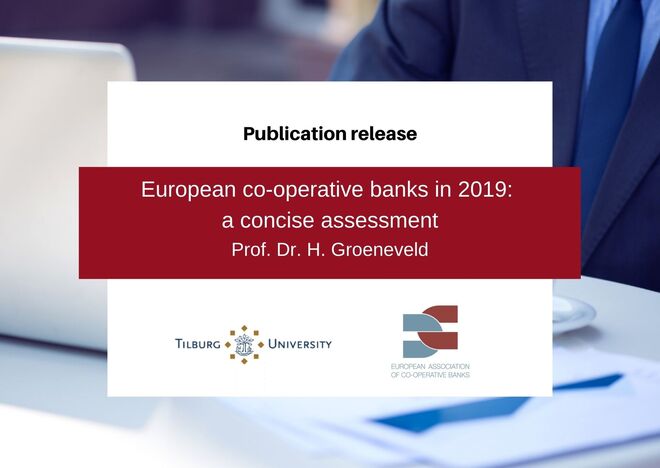The EACB is pleased to announce the launch of a new publication entitled “European co-operative banks in 2019: a concise assessment” by Tilburg University. The publication reviews developments in the overall performance of 18 co-operative banking groups in 13 European countries. The average performance is compared to that of the entire banking sector in same countries in 2019.
The paper was released today during the presentation webinar organised by the EACB.
Report’s highlights:
- Membership distinguishes co-operative banks from all other banks. Members are users and act as owners of co-operative banks. In 2019, on balance, more than 1.1 customers took the step of becoming members of their co-operative bank. This represents a net increase of 1.3 per cent to 86 million members.
- Co-operative banks consolidated their average domestic market shares at the record level of 2018. The loan and deposit market share stabilized at 23 and 21.9, respectively. Viewed over a somewhat longer time-period, the market shares of co-operative banks appear to be constantly on the rise.
- In 2019, co-operative banks recorded the highest loan expansion since 2007 (6.1%). The credit growth of co-operative banks has always exceeded loan growth of all other banks. Since 2011, co-operative banks granted the non-financial private sector 28 per cent additional loans. The credit volume of other banks was just 3 per cent higher than in 2011. Cooperative banks' deposits increased by 6.4%, while other banks experienced deposit growth of 3.9%.
- In 2019, the average Tier 1 ratio of co-operative banks remained at exactly the same high level as in 2018: 15.9. This suggests that co-operative banks entered the covid-19 pandemic of 2020 at least with a solid capital buffer.
- Over the last few years, the average return on equity for co-operative banks has been remarkably stable around 6%.



